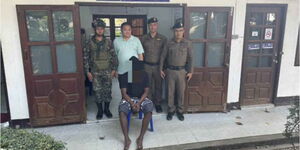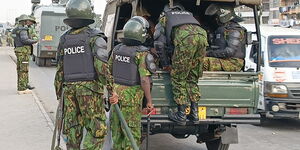Travellers are now assured of improved safety and minimal disruptions after the Kenya Airports Authority (KAA) launched a state-of-the-art New Generation Aircraft Recovery System at the Jomo Kenyatta International Airport (JKIA).
The equipment is the first of its kind in Africa and is designed to rapidly and safely remove disabled aircraft from runways and taxiways, minimizing disruptions and enhancing safety.
The launch marks a significant improvement in the emergency preparedness and operational efficiency at the country’s busiest airport.
The system, which was supplied by the AMS Aircraft Recovery Ltd of the United Kingdom, was officially launched on Friday, June 27, in an event flanked by high-profile leaders, including KAA Chairperson Caleb Kositany.
“This state-of-the-art system marks a major milestone not just for KAA but for Kenya’s aviation sector as a whole. This equipment will now allow us to respond faster, more safely, and more effectively in such situations—reducing delays, protecting lives and assets, and ensuring continuity in operations,” Kositany said during the launch.
The launch is part of the government's initiatives to position JKIA as a premier aviation hub in Africa.
The recovery system features advanced over-wing lift tooling, enabling rapid deployment during incidents and ensuring that flight operations can resume with minimal downtime.
Also, present at the launch were KAA Acting Managing Director and CEO Nicholas Bodo, AMS Managing Director Yehuda Fishman, and representatives from key aviation stakeholders, including the Kenya Association of Air Operators (KAAO), Kenya Civil Aviation Authority (KCAA), and the International Air Transport Association (IATA).
KAA has lauded the move, revealing that it is vital for maintaining operational continuity, reducing flight delays, and safeguarding airport infrastructure and passenger safety.
The recovery system is also expected to significantly boost the aviation sector and save it from the losses it incurs from costly delays and logistical challenges for airlines and passengers alike.
It also enhances the airport’s ability to comply with international safety regulations.
The system comes at a time when JKIA is experiencing increased passenger and cargo traffic, placing greater demands on safety and functional resilience.
KAA has expressed its confidence that this move will continue to put Kenya on the edge of maintaining its competitive advantage over other countries in the region.












